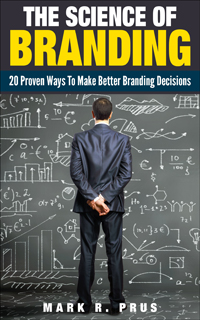Is Strange A Good Naming Strategy?
In 1967 The Doors wrote a song called “People Are Strange.” In the chorus, the lyrics include the phrase, “No one remembers your name when you’re strange.” It seems like some current fashion labels think that advice no longer applies.
"If you are building a brand from scratch, you're going to get more reaction from something unexpected and strange," says Tom Julian in a New York Times piece by David Colman (2/7/13). It seems as if fewer fashion designers are naming their lines after themselves and are launching lines of clothing with strange names. Consider what Shane Gabier and Chris Peters call their new line: Creatures of the Wind. It's taken from a 1957 Johnny Mathis song. "We liked the moody atmosphere and the way that the song brings up different associations," says Shane.
David Colman’s article is titled “No One Forgets a Name When It’s Strange.” Apparently Mr. Colman is not a child of the 1960s. One of the first rules of naming is figure out a way to make it memorable. Strange does not equal memorable.
Consider Natsuko Kanno's line which is called 4 Corners of a Circle. Apparently it is memorable for being hard to remember. Publicist Erica Roseman says nearly everyone — even those who work on the line — mess it up. "It was '4 Circles in a Square,' '4 Corners of a City.' No one ever got it right."
Jean Godfrey June, the beauty and fashion news director at Lucky, thinks the quirky names can be a mixed blessing. "It goes one way or the other, they charm or they repel … The offbeat name is a way to distinguish yourself and sound mysterious and underground-y. The trade-off is, purposely making yourself sound obscure can turn into a self-fulfilling prophecy."
You’ve got that right, Jean!
The lesson here is that strange is not necessarily a good or a bad thing, but what is important is how the name relates to the target customer and the product itself. Strange for the sake of strange can be bad, but if the name makes the target customer curious about a product and willing to investigate it further, then strange can be good. This was validated in a study in The Journal of Consumer Research in 2005 where the investigators looked at differences in names for crayons. The findings indicate that consumers preferred “slightly ambiguous” names such as “Blue Haze” or “Alpine Snow” to plain descriptive names such as “Blue” or “White.” But their findings also indicated that names without some reference (e.g., calling a blue crayon “Fred”) were totally confusing to consumers.
Net, net, don’t assume that strange is necessarily good or bad. Like most things in life, the nuances are what make the difference between a great name and a confusing name.



